Why won't the dishwasher drain the water and what should I do?

The dishwasher can be described as a rather complex device from a technical point of view. And like any technique, it can fail, break down and work incorrectly. One sign of a problem is that the dishwasher is not draining the water. We will try to figure out how to diagnose the problem, as well as analyze the causes of its occurrence, and what to do to eliminate a malfunction of this nature.
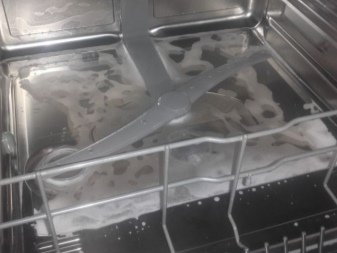

Diagnostics
The main sign that the new dishwasher is not working correctly is that the water is not completely drained from the tank after the wash cycle. Or the water is at the bottom right in the wash compartment, which is also often the case.
But such a problem can usually be diagnosed only after washing the dishes.
It should be added here that the liquid in almost any such technique goes in a closed cycle. That is, after the filtration mechanism, the pump will start pumping it out when the wash cycle is completed.
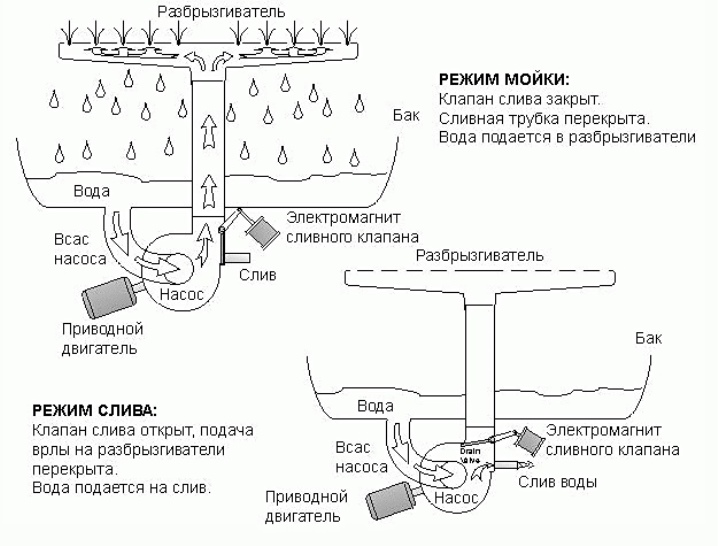
You can only verify that the problem exists visually when the machine stops working. To do this, you will need to open the compartment for washing and see that the water either does not leave at all, or it has gone partially, but there is still a significant amount of it in the pan. There are other evidences of this phenomenon - visual and sound indication, as well as the fact that the machine hums very much during operation.
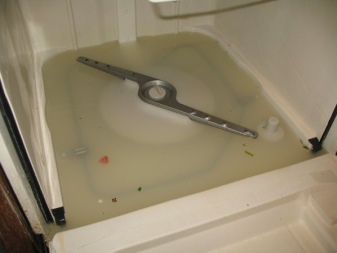
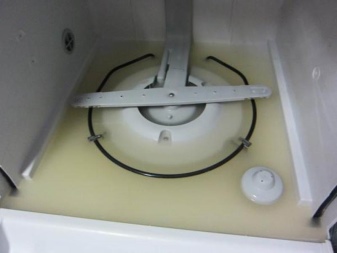
If the device is equipped with a display, then the corresponding error code usually appears on it.
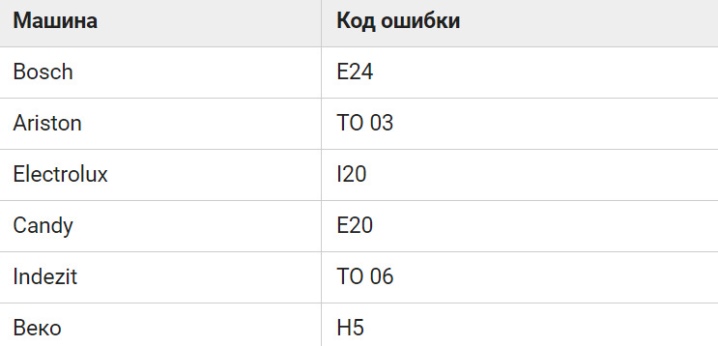
Causes and troubleshooting
We will try to understand the most common causes of breakdowns of the equipment in question, and also find out how to eliminate them. Let's consider different cases of malfunctions.
- Problems with the control module. Damage to the control unit becomes the reason that the technician simply does not know what to do after washing the dishes, because the control element is faulty.
- Installation error.
- Faulty water level sensor. This is not an element of the drain mechanism, but it may give incorrect data to the program module about the water level in the dishwasher compartment.
- Incorrect placement of the drain hose. Usually arises from improper installation of equipment or rearrangement of furniture in the kitchen.
- Breakdown of the pump, which is responsible for pumping fluid out of the device. Not only the pump itself can break down, but it can also happen that, due to the presence of a plug or blockage, it simply does not have time to fulfill its direct function - to pump out water.
- Clogged filter. Such a malfunction is considered the most common. It occurs due to the fact that users do not clean the dishes from food waste before loading into the dishwasher and neglect to clean the filter itself.
- Technical difficulites.
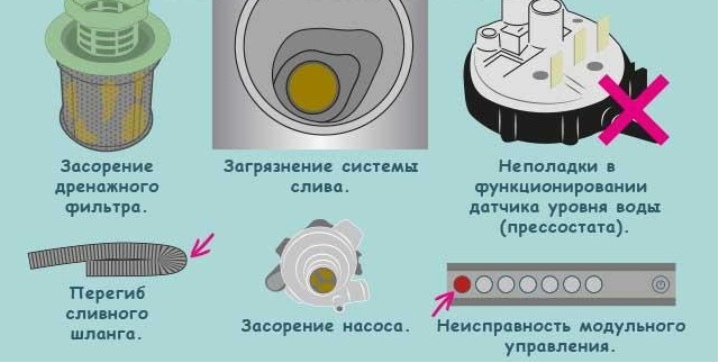
Installation error
Quite often it turns out that the dishwasher refuses to drain the water, or the latter partly remains in it due to the fact that the user grossly violates the basic rules and regulations for the use of such equipment.
Or, during self-installation, some violations were made.
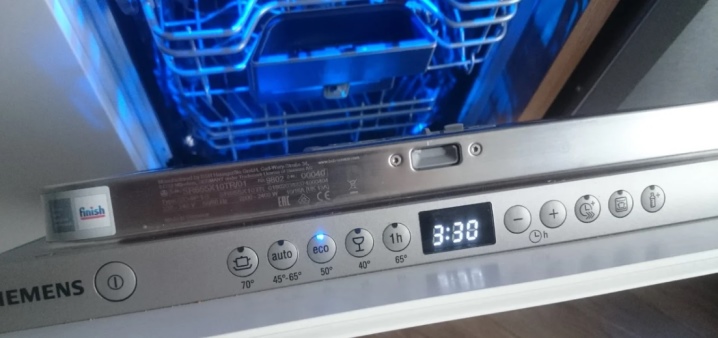
In this case, even a completely serviceable technique can work incorrectly. The most difficult problems here can be:
- clogging of the debris filter;
- clogging of different parts of the drain;
- incorrect positioning of the drain hose.
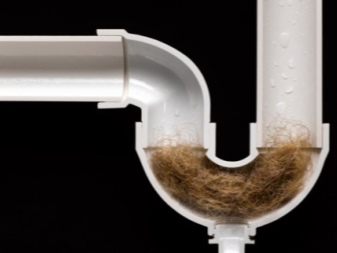

Laying the drain hose
Incorrect installation or incorrect placement of the drain hose are common causes of problems that can cause water to remain in the dishwasher. If the installation is made at a height of more than 150 centimeters from the floor level, then the pump simply cannot raise the water to the siphon or the place where the connection to the sewer is made. Then the clogging of the hose is a matter of time. The same result will be obtained if the hose is pinched or if its length exceeds 200 centimeters.
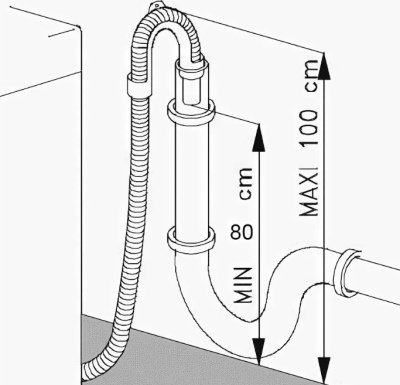
To make sure that the cause of the problems is precisely in the described phenomenon, a number of actions are required.
- Move the dishwasher away from the wall and examine the hose for kinks. If they are present, then you need to straighten it and check if the water starts to leave normally. And also it is necessary to ensure that the device is located at the required distance from the wall - at least 30 centimeters.
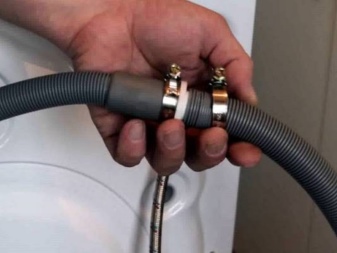
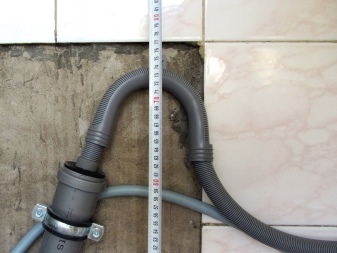
- If there are no kinks, then it is necessary to check the hose for clogging with food debris, grease or scale. To do this, you need to disconnect it, then put the end in a bucket or a pre-prepared dish deeper, and turn on the forced drain. If the water pressure is quite strong, then everything is in order with the hose. If the pressure is weak, then, most likely, a plug has formed in the hose. It can be eliminated with thick wire. Alternatively, you can use special cleaning agents. Everything must be done as carefully as possible so as not to deform the hose from the inside.

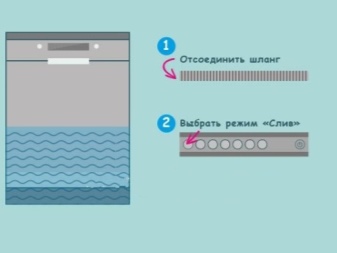
Clogged filter
In an technique such as a dishwasher, the filter usually consists of two parts that are connected together.
It is usually located at the bottom of the working chamber.
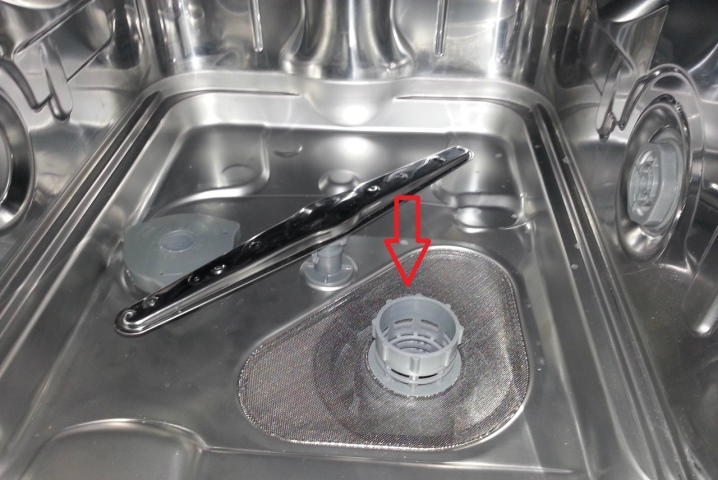
Most often, the main filter is equipped with a special filtration mesh, which is also a filter that does not allow food-type waste to pass through.
And the so-called inner cup is made of a mesh with large meshes and is a filtering part that makes a rough cleaning. When water passes through it, it falls on the surface of the outer fine-mesh mesh, which finally cleans the liquid from food debris.
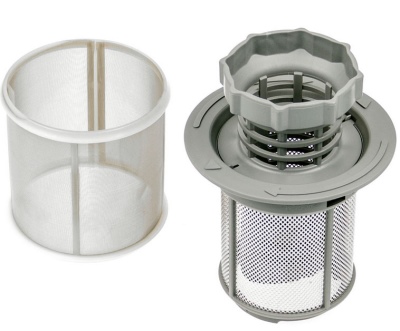
Filters are cleaned in a certain way.
- We take out the dish basket from the dishwasher.
- We unscrew the filter cover located at the bottom of the compartment, next to the spray gun.
- We pull out a couple of dirty "glasses" from the niche for filtration.
- We rinse them thoroughly with running water. If necessary, we use any dish detergent and a toothbrush for this.
- We open the lid that is located above the filters, and we get access to the pump impeller. Now let's see how well it spins. If there is some kind of inhibition, then it is necessary to remove the blockage with tweezers. When the cleaning is complete, you need to put the parts in their places.
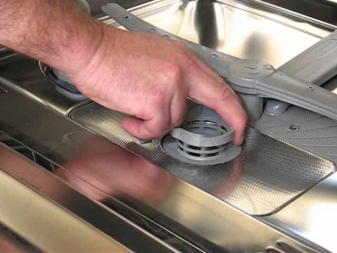

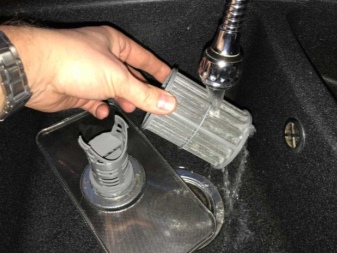
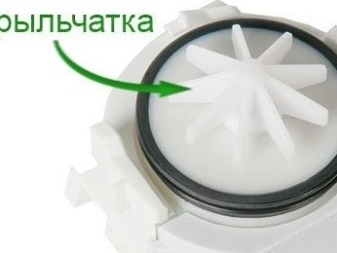
Cleaning the filter does not always solve the problem. You can search for plugs nearby, that is, in other elements of the drain mechanism. For example, if the water comes off well after disconnecting the hose from the siphon, then you should look for a plug at the point of entry into the sewer. You can fix this problem with the simplest cleaning.
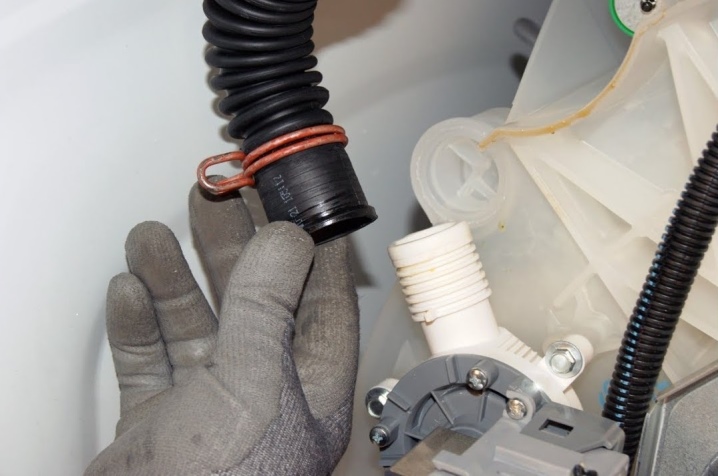
technical issues
If the above measures did not solve the problem, and the repair was not successful, the causes of the problems should be looked for already in the breakdowns of the instrument assemblies and the failure of various components.
Despite the fact that dishwashers are highly reliable equipment, this is usually the result of external influences or natural wear.
Water cannot enter the sewer then for one of the following reasons:
- breakdown of the pump;
- malfunction of the control module;
- water level sensor malfunctions.

Broken pump
Blockage is not the only problem a pump can have. If the dishwasher has been used actively and for a long time, and at the same time it has not been serviced, then this element may simply break. For example, the impeller could be damaged if it is hit by solid objects.
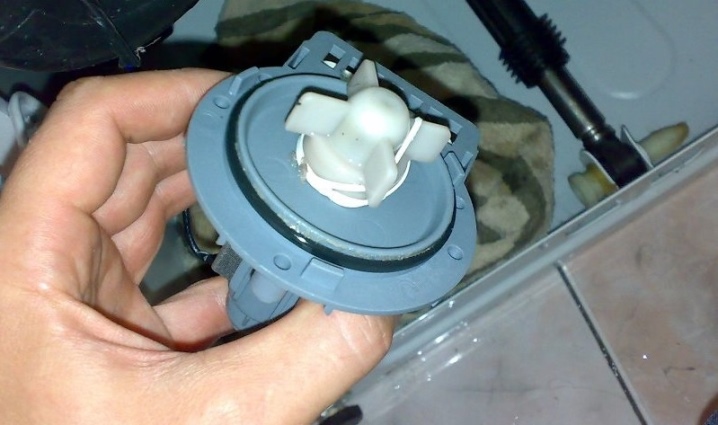
There are frequent cases when the device burns out due to such a phenomenon as voltage drops. If there is no voltage from the control board during the resistance test, this means that the part is defective.
The problem can only be solved by replacing it.
To clean it, first of all, you need to understand how it would be better to drain the water that is inside the dishwasher disconnected from the network. This can be done by manually scooping up the liquid, or draining it by gravity by tilting the device.
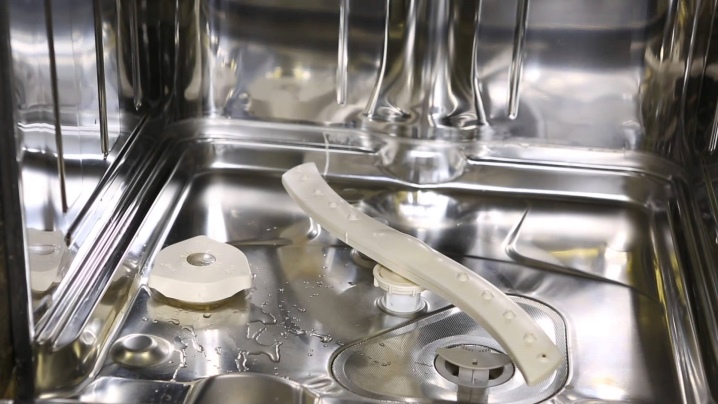
After that, you will need to perform the following actions:
- dismantle the drain hose;
- turn the dishwasher over;
- unscrew the pallet;
- dismantle the water level control sensor;
- remove the pump by unscrewing the contacts and fasteners;
- clean the volute and impeller;
- clean the contacts, and check the resistance level;
- check the pump valve for clogging.
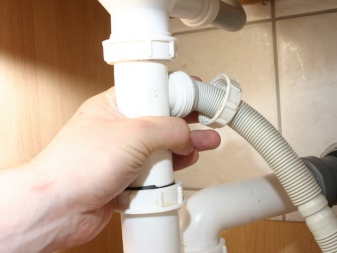
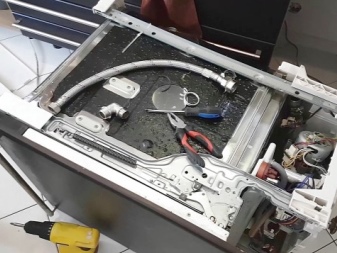
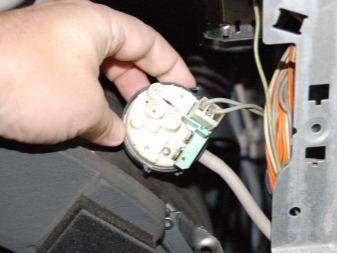
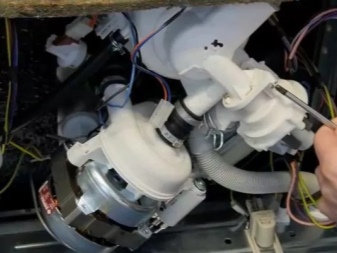
By the way, this also includes problems with the sewerage system. That is, the pump, during its operation, does not have time to pump out all the water from the dishwasher due to the fact that the sewer system is clogged with waste.
To localize the malfunction, it will be necessary to disconnect the drainage hose from the sewer.
If a dirty liquid with a characteristic specific and rather unpleasant odor has flowed from there, then you should try to clean this element with your own hands. This will require several steps.
- Pour boiling water into the drainage hole, in which you first need to dissolve the pipe cleaner.
- If this does not help, and the sewer is still clogged, then you can use a steel cable for cleaning, if available. If it is not there, then it would be better to invite a plumber who definitely has a similar device in his inventory.
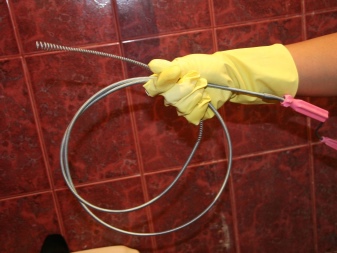
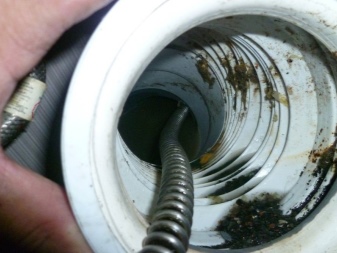
Sensor defective
The water sensor, or pressure switch, is responsible for monitoring the water level in the dishwasher. If this part breaks, then water will constantly accumulate in the sump.
The difficulty will be that, due to the structural features of such equipment, it is not very easy to get to the sensor.
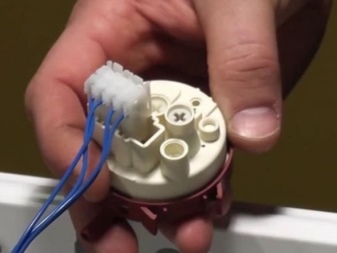

To check for a fault, you need to ring the electrical circuit with a multimeter.
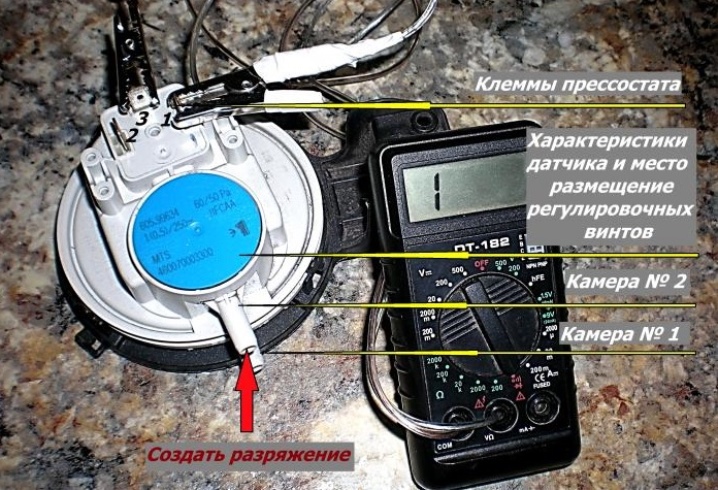
If the water sensor is out of order, then it needs to be replaced. This part cannot be repaired. A breakdown of the pressure switch can be caused not only by a blockage. Some of the most common causes are tube defects that reduce pressure, wear from prolonged use, and oxidation of contacts.

Damaged control module
Failure of the control module is the most serious problem and can cause water to stagnate in the dishwasher.
Basically, it is the brain of the device that is responsible for almost everything. Including for the program of forced draining of liquid.
Replacing a control module is a very costly process from a financial point of view. Therefore, if the dishwasher has not yet expired the warranty, then it is better to return it for repair right away. But if it is over, it will be easier to purchase a new one than to repair the electronic module. In addition, you can check the serviceability of this element exclusively in the service center, where the master has all the necessary equipment at hand, as well as special software.

Prevention measures
As you can see, there are quite a few problems that can cause breakdown or malfunction of the dishwasher. But do not assume that a person will quickly encounter any of the aforementioned malfunctions. They can be avoided by taking preventive measures from time to time and following some rules.
- It is required to install the dishwasher only in accordance with the instructions.
- Be sure to use salt to soften hard water and special dishwashing detergents.
- Remove any food debris from the dishwasher before loading it into the dishwasher. This will ensure that the filter does not clog.
- The filter should be cleaned at least once every two weeks. In addition, it is necessary to start the dishwasher in preventive mode at least once every 30 days. That is, start it, but do not load the dishes inside. And also do not forget to clean the seals on the door of the device.

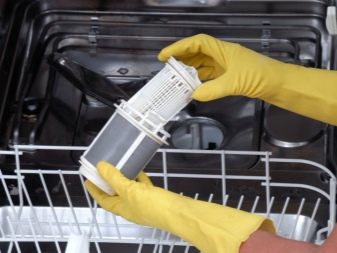
We add that the above measures will help to significantly extend the life of any dishwasher, and can also reduce the risk of various kinds of breakdowns and malfunctions.
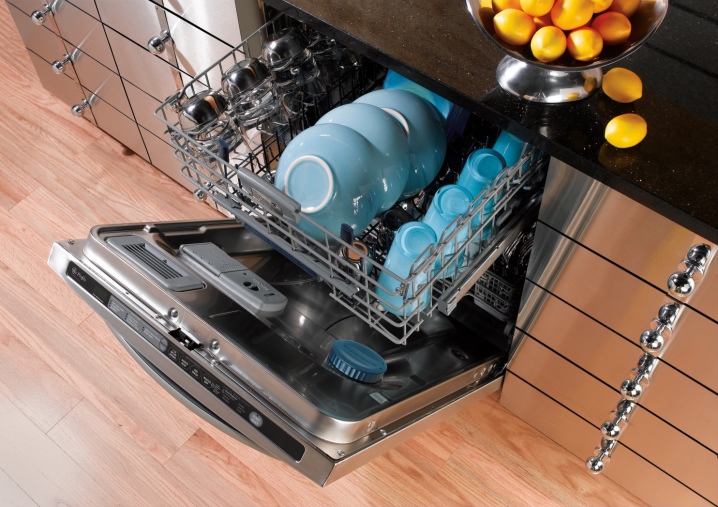













The comment was sent successfully.